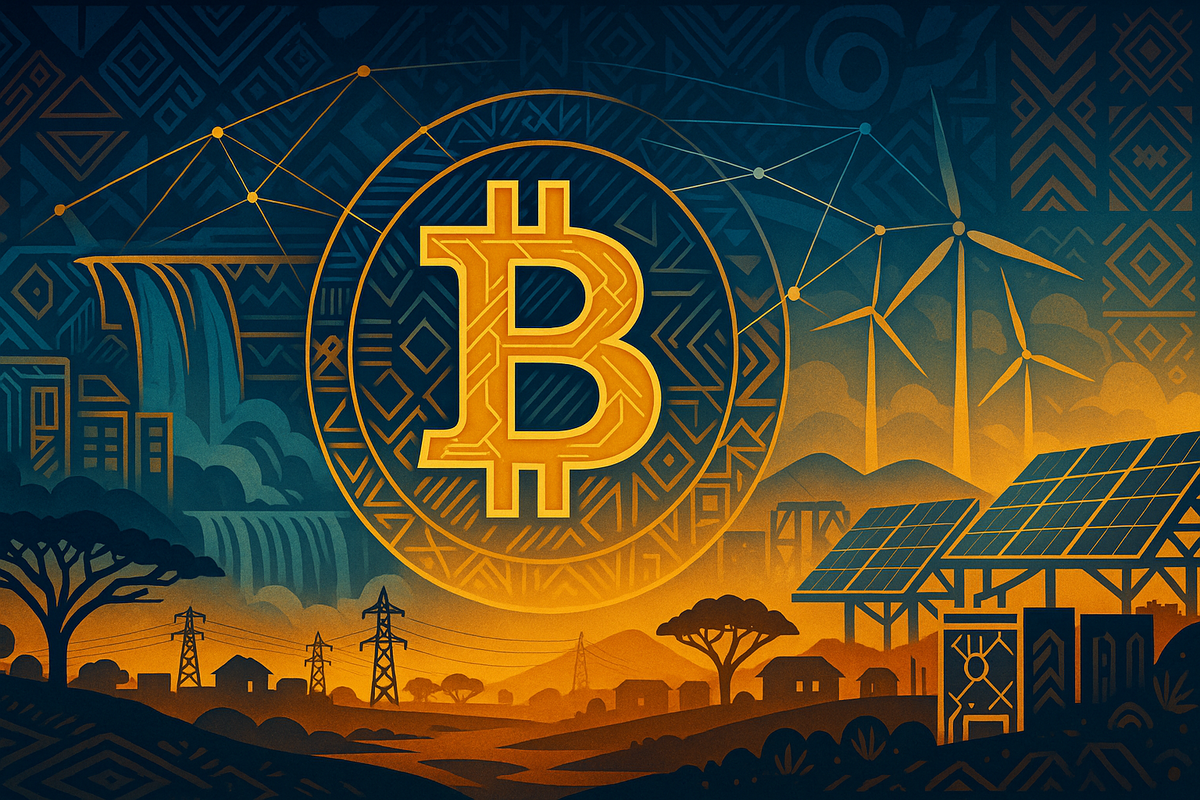Mining-Backed Power and Exchange-Rate Frictions in Africa
The December 15, 2023 episode of What Bitcoin Did features Erik Hersman on currency shocks, informal exchange rates, and mining-enabled electrification.

- My 'briefing notes' summarize the content of podcast episodes; they do not reflect my own views.
- They contain (1) a summary of podcast content, (2) potential information gaps, and (3) some speculative views on wider Bitcoin implications.
- Pay attention to broadcast dates (I often summarize older episodes)
- Some episodes I summarize may be sponsored: don't trust, verify, if the information you are looking for is to be used for decision-making.
Summary
The December 15, 2023 episode of What Bitcoin Did features Erik Hersman on currency shocks, informal exchange rates, and mining-enabled electrification. Hersman explains how mining as a buyer-of-first-resort can lift mini-grid utilization, compress payback periods, and anchor local tariffs. He also details constraints from volatility, mobile-money surveillance, and hardware realities that shape practical adoption.
Take-Home Messages
- Currency Shocks: Abrupt devaluations and dual exchange rates transfer systemic risk to households and SMEs.
- Buyer-of-First-Resort: Mining monetizes idle mini-grid capacity, stabilizes cash flow, and shortens ROI windows.
- Payments Fit: Agent-based Lightning corridors succeed when they mirror existing cash behaviors and corridor norms.
- User Protection: Volatility conflicts with short savings horizons; institutional and infrastructure use cases fit better.
- Execution Risks: Hardware resilience, transparent tariffs, and proportionate regulation determine scalability.
Overview
Erik Hersman characterizes “economic imperialism” as incentive structures that channel capital out of emerging markets while domestic policy shocks erode purchasing power. In the African context, he points to Malawi’s overnight 44% devaluation and persistent bank–street spreads as mechanisms that distort pricing, payroll, and inventory planning. In this environment, households and SMEs absorb losses they cannot hedge through local instruments.
He argues that Bitcoin mining can serve as a dependable offtaker for underutilized mini-grids, especially micro-hydro sites distant from strong demand centers. By turning idle capacity into revenue, operators can move toward full utilization and cut payback periods to mid–single digits. In this framing, Bitcoin functions first as an energy monetization tool and only second as an asset on balance sheets.
On payments, Hersman highlights Lightning rails organized around cash-in and cash-out agents that reflect how people already transact. He notes that corridor norms, float management, and reliability determine whether agents outperform incumbent rails. He stresses that speed and predictability, not ideology, drive user choices across borders.
He also outlines constraints that bound success and prevent overclaiming. Volatility mismatches short household savings horizons, and expanded state access to mobile-money data can push users back to cash. He adds that heat, dust, and supply chains complicate hardware operations, so local builders, pension rails, and multi-firm ecosystems matter more than single-company dominance.
Stakeholder Perspectives
- Households and SMEs: Want stable purchasing power, predictable tariffs, and low-friction remittances aligned to short planning horizons.
- Mini-Grid Developers: Seek dependable offtake to finance capex, reduce downtime risk, and pass efficiencies into transparent tariffs.
- Energy and Finance Regulators: Balance surveillance and tax priorities with inclusion, grid expansion, and consumer protection.
- Institutional Investors and Pensions: Evaluate hedging and settlement benefits against volatility, custody, and compliance.
- Local Builder Ecosystem: Prioritize agent networks, pension products, and maintenance standards that match real behaviors and conditions.
Implications and Future Outlook
Mining-anchored electrification will scale where hydrology is reliable, tariff gains are credibly shared, and operators can hedge revenue through cycles. If regulators adopt proportionate oversight of agent networks and avoid blunt data grabs, remittance speed and cost can improve without shrinking formal usage. Evidence on uptime, connection growth, and appliance uptake will determine whether pilots become policy templates.
Sustained tariff floors depend on hardware resilience, treasury discipline, and competitive pressure among miners that prevents rent extraction. Communities will judge success by bill stability and service quality rather than narratives about hash rate. Transparent reporting on costs, downtime, and power sharing will be necessary to maintain legitimacy.
For savings use, product design must reflect short horizons and earnings volatility in lower-income contexts. Institutional rails, pensions, and energy settlements show stronger fit than retail “store of value” marketing. Over the next cycle, outcome data will shape regulatory posture, concessional financing, and private capital allocation.
Some Key Information Gaps
- Under what hydrology, load, and tariff conditions does mining reliably finance mini-grids? These parameters determine replicability and guide concessional finance and public–private design.
- How stable is a mining-anchored $0.07–$0.09/kWh floor across price cycles and hardware generations? Tariff durability is central to household welfare and regulatory confidence.
- Where do agent-based Lightning corridors deliver the largest fee and speed gains versus incumbents? Corridor-level evidence informs proportionate oversight and inclusion strategies.
- What portfolio and custody designs fit 3–12 month savings horizons in volatile asset regimes? Right-sizing risk protects users while enabling practical adoption.
- Which hardware, enclosure, and maintenance standards minimize downtime in harsh climates? Operational resilience drives cash-flow stability and investor willingness.
Broader Implications for Bitcoin
Energy Monetization as Development Policy
Mining can convert stranded or variable renewables into contract-worthy revenue streams that crowd in capital for rural grids. If tariff gains reach end users, this model shifts development finance from grant dependence toward performance-backed infrastructure. Over time, regions will compete on reliability, transparency, and miner diversity to attract long-horizon investment.
Payment Rail Realignment
Agent-based Lightning corridors can rewire remittances where incumbent fees and delays are high. As corridors mature, regulators will face a trade-off between granular data collection and preserving formal usage that supports tax capacity. A rules-based, proportionate approach can sustain inclusion while enabling faster, cheaper transfers.
Institutional Adoption Over Retail Volatility
Short household horizons limit retail savings use, but pensions, utilities, and cross-border settlements can adopt Bitcoin-linked rails with professional risk controls. This institutional path seeds liquidity and standards without exposing vulnerable users to price swings. Over three to five years, infrastructure-first adoption may create safer and clearer retail on-ramps.
Decentralized Offtake and Local Governance
Distributed offtake reduces single-buyer risk for mini-grids and increases community bargaining power. Transparent revenue sharing and open reporting will be necessary to prevent capture by operators or political intermediaries. Jurisdictions that codify these norms can scale projects while preserving local legitimacy.



Comments ()